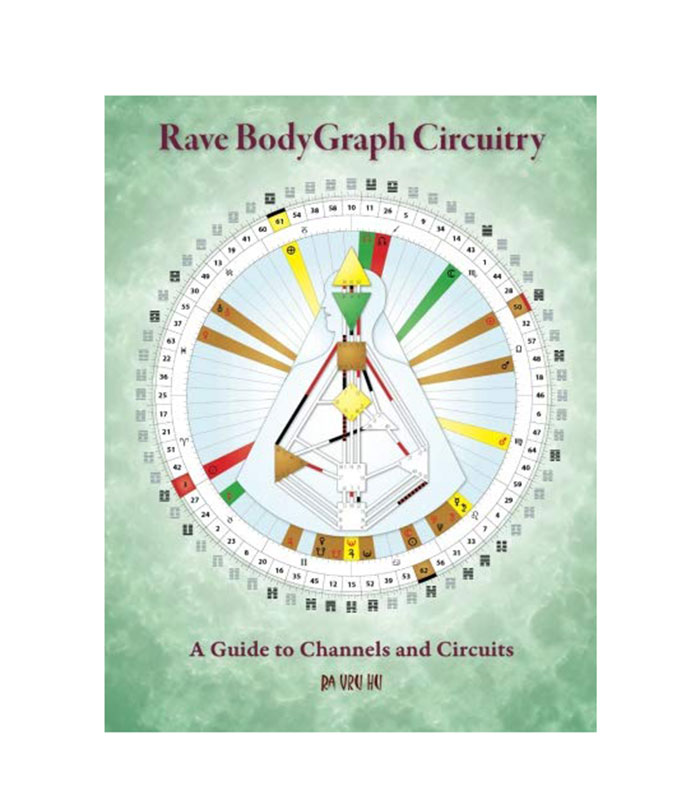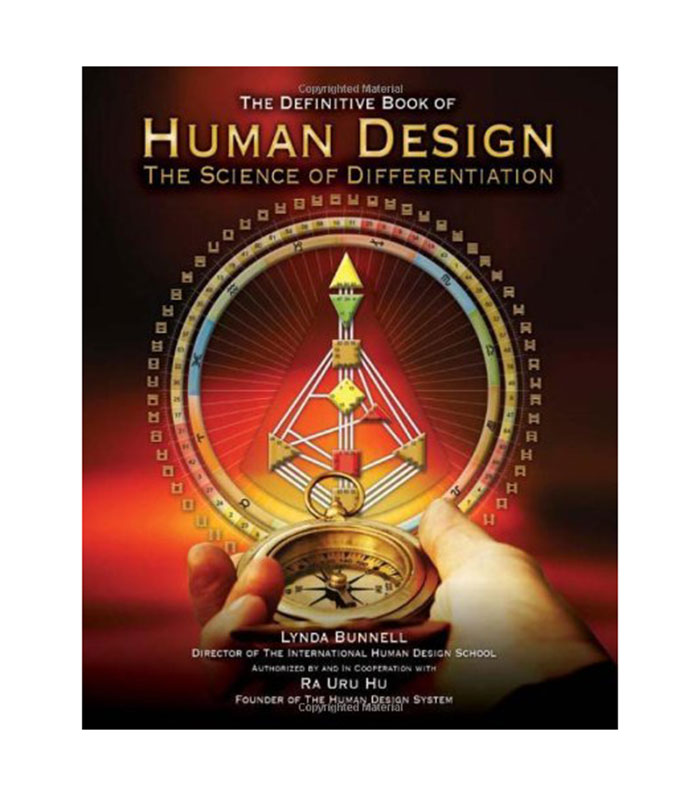Forget Astrology—You'll Be Talking About Human Design Next

If you're the type of person who obsessively checks their Co-Star app, pays for a subscription for Susan Miller's Daily Astrology Zone, and follows astrology-related accounts on Instagram and Twitter, you're going to want to sit down for this. There's another system out there that will help you figure out your personality and the age-old questions: "Who am I? And why do I do the things I do?"
Enter human design. We first became aware of it when we saw a lot of fashion girls we love posting about its benefits on Instagram. And because Instagram is always a gateway to a black hole of research and discovery about various trends (sometime it's a good thing, like in this case), we did some Googling and became even more curious. We reached out to Erin Claire Jones, a human design guide and leadership coach, to get a breakdown of what it actually is and how we can use it in our daily lives.
"Human design kind of gives us our energetic DNA. So the idea is we all come into this life without an operating manual, and human design gives us that manual," Jones says. "[It shows us] how each of us is uniquely designed to thrive, specifically around how we're designed to make decisions, communicate, what teams we work best in, where our natural strengths are, how we can best overcome our distractions, and so much more. It is based on your exact time, date, and place of birth."
So in short, we all have a very specific human design (Jones says there are over two billion types or configurations). Knowing what our design is will help give us insight into our unique nature, and if we align with it—meaning we're not going to try to fight or change our true selves—we hopefully will be able to go through life easier and more successfully because we understand ourselves better.
Intrigued? Well, there's a lot more to unpack here.
How Did It Start?
This is going to sound a little crazy, but stay with us. In 1987, the founder of human design, Ra Uru Hu (born Alan Krakower) manifested the system after a mystical "encounter" with "a voice," who gave him the ideas and tenets. Two years later, Ra Uru Hu wrote the book Rave I'Ching, which is the foundation of the system, according to the Jovian Archive, the site Ra Uru Hu and his family created, which holds the exclusive copyright to the system.
Jones tell us that human design combines Kabbalah, I'Ching, the chakra system, quantum physics, genetics, and biochemistry all into one master system.
Still here? We know it sounds a little woo-woo, but once you get into the different types and your own actual human design, you might change your mind. Full disclosure: I was a bit skeptical when I completed my chart (it looks like an anatomy poster gone awry), but when Jones walked me through it, it made a lot more sense. Picture me saying, "Oh my God, that's me!" over and over again.
What are the Different Parts of Human Design?
Now it's time to get into the nitty-gritty—how to make sense of your design. When you get your design, you'll see a body graph and a chart with numbers and symbols. Underneath that, you'll see what your "Type," "Signature," "Not-self Theme," "Strategy," "Inner Authority," Incarnation Cross," and "Profile" are.
According to the International Human Design School, your Type "embodies the very essence of the Human Design System. It's the basis for the most practical, empowering and transformative information—your Strategy and Authority. Type is about your body, your genetics and your aura. It’s how you harmonize with the world around you and align with your true nature."
Jones says that your Strategy is how you're designed to engage with life. The Signature is a sign of "being on track" and your Not-self Theme is your sense of "being off track." Your Inner Authority is how we make decisions. The Profile is how we're designed to manifest our purpose.
And as for the Incarnation Cross, the Jovian Archive states it is "what ultimately defines our purpose on earth." Jones says she doesn't go into too much when meeting with clients: "I usually don't talk about them with people in sessions because they're very personal. I often will direct people to a resource to just read about it."
But if you do anything with your Human Design, you'll want to pay close attention to your Type. Jones says there are five Types: Manifestors, Generators, Projectors, Reflectors, Manifesting Generators. Here are their descriptions according to the Jovian Archive:
Manifestors are just 9% of the population, whose "strategy is to inform before they act to find peace and avoid anger. They have a closed and repelling aura, and are here to understand their impact on others."
Generators (this also includes Manifesting Generators, with some varied traits) have a strategy that's "to respond, and through response to find satisfaction and avoid frustration. They have an open and enveloping aura, and need to learn about themselves." They make up 70% of the population.
Projectors' strategy "is to wait for the invitation to find success and avoid bitterness. They have a focused and absorbing aura, and need to learn about and understand the other." They're 20% of the population.
Reflectors are the rarest, at just under 1% of the population. According to the Jovian Archive, "their strategy is to wait a full cycle of the moon before making decisions to find clarity, leading to a life of more surprise and less disappointment. They have a resistant and sampling aura, and are learning to reflect rather than identify."
When it comes to interpreting the chart and body graph, you might want to leave that to the professionals because it will make zero sense to you. "In sessions, I send people their charts to them so they know that it comes from this crazy-looking thing, but the most important piece is that in human design, there are nine different energy centers," Jones says. "So, each of those energy centers is a different geometric shape, and each represents a different function of the body. When the areas are colored in our design, those are the ones that are operating in a more consistent, or reliable, way within us, so those are where we draw our energy from. The centers that are white, those are the things that operate in a more inconsistent way, so that means they are the parts where you're very sensitive to taking influences from the environment around you and they're the places where you can get very taken off-track, but they are also the places of real wisdom for you."
How Can It Help Me?

The most important thing about human design that sets it apart from other personality assessments is that it can help you guide your decision-making, communication, and interactions with life. "In general, what I love about human design is it not only gives us very powerful information about ourselves, but it gives us real tools in terms of how to really integrate that into our lives. It's very specific and very detailed," Jones says.
It's not about changing your nature or fixing your faults, but about adapting and embracing them. "Once you know your design, it tends to be very integrated into how you're showing up every day because it also reveals all the areas of your design where you're the most vulnerable to getting taken off track," Jones says. "Now that I have the awareness of those areas, what it's like to be in the weeds, it's so much easier for shift out of things once I've gotten lost in them."
And how does it compare to Myers-Briggs or an Enneagram test? It's not based on your current circumstance since your name, birth date and time, and birth location won't change (for the most part). "My experience with those [tests] is that your results often change based on time, or it's aspirational," Jones adds. "Someone might answer that when they're preparing for a job and answer it in the way they want to be. So in my experience, it's a little less reliable, and also sometimes those things don't give us all the tools to actually integrate it into our own life. Whereas human design basically looks at the things we're very conscious about and the things that we're aware of but also things that we're totally unconscious of."
Okay, I'm Sold. Where Do I Start?
You can get your free chart on Jones's site, and there's a lot of information out there about the various Types, like on the Jovian Archive or International Human Design School. Jones recommends the very dense The Definitive Book of Human Design by Ra Uru Hu for a deeper dive.
All of the information can be somewhat overwhelming to parse out or understand, so if you are really serious about exploring your human design, an expert can help. While you can opt for a session, which can be pricey, Jones also offers a Blueprint, which is 30-page, tailored and comprehensive guide to your design for $95.

And once you have all the tools and action items, Jones recommends practicing your Strategy and Authority. "I never want this to be a prescriptive thing; like this is who you are, this is a tool. The idea is that often if you align with your design, life is going to feel a little bit easier and more in flow, and it's just going to feel better, and that just makes sense to people," she says. "I definitely try to introduce it in a way that doesn't feel like I'm imposing anything on them or asking them to believe something; it's more that this is a tool to make things easier for you, and often what I'm saying about their design is resonating on such a deep level that they get it pretty immediately."
That kind of thinking is pretty cool because you don't have to force yourself to be something you're not, you're just working with what you got. Can't say no to that bottom line.
Next up: Everything You've Wanted to Know About Reiki Healing (But Were Afraid to Ask)
This article was originally published at an earlier date and has been updated.
This article is provided for informational purposes only and is not intended to be used in the place of advice of your physician or other medical professionals. You should always consult with your doctor or healthcare provider first with any health-related questions.
Sarah is lifestyle writer and editor with over 10 years of experience covering health and wellness, interior design, food, beauty, and tech. Born and raised in Los Angeles, she attended New York University and lived in New York for 12 years before returning to L.A. in 2019. In addition to her work at Who What Wear, she held editor roles at Apartment Therapy, Real Simple, House Beautiful, Elle Decor, and The Bump (sister site of The Knot). She has a passion for health and wellness, but she especially loves writing about mental health. Her self-care routine consists of five things: a good workout, “me” time on the regular, an intriguing book/podcast/playlist to unwind after a long day, naps, and decorating her home.




